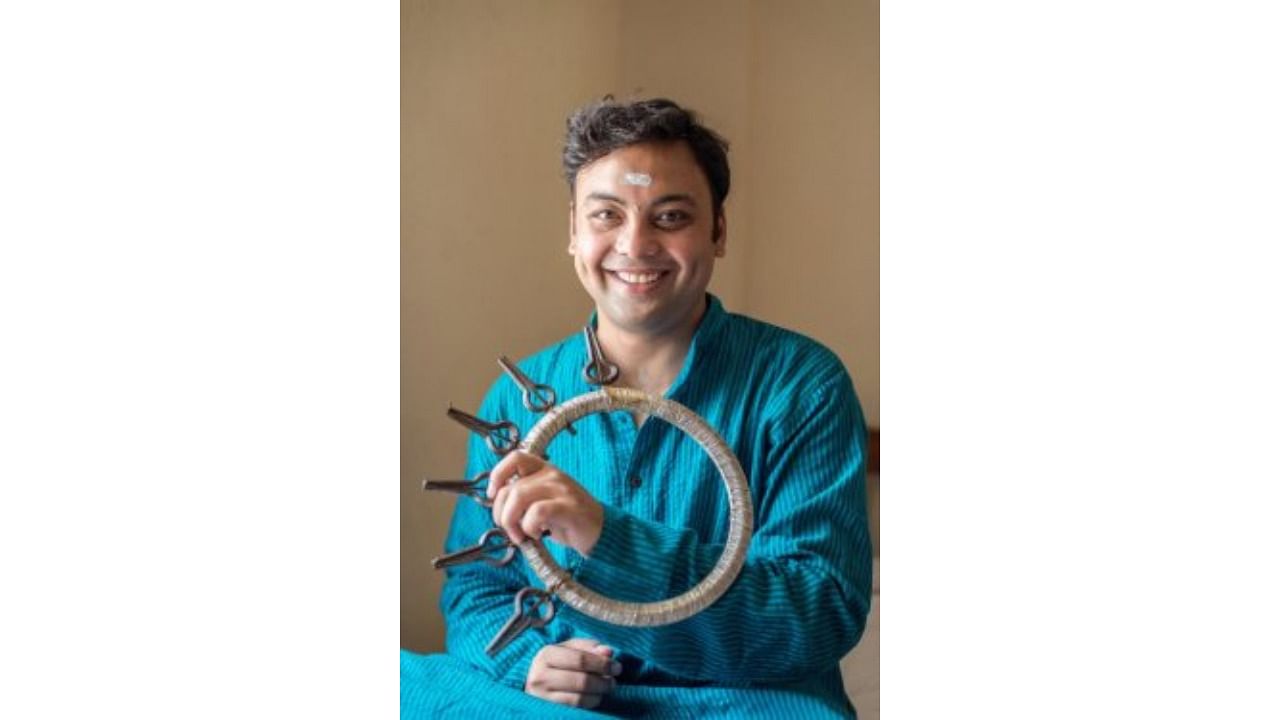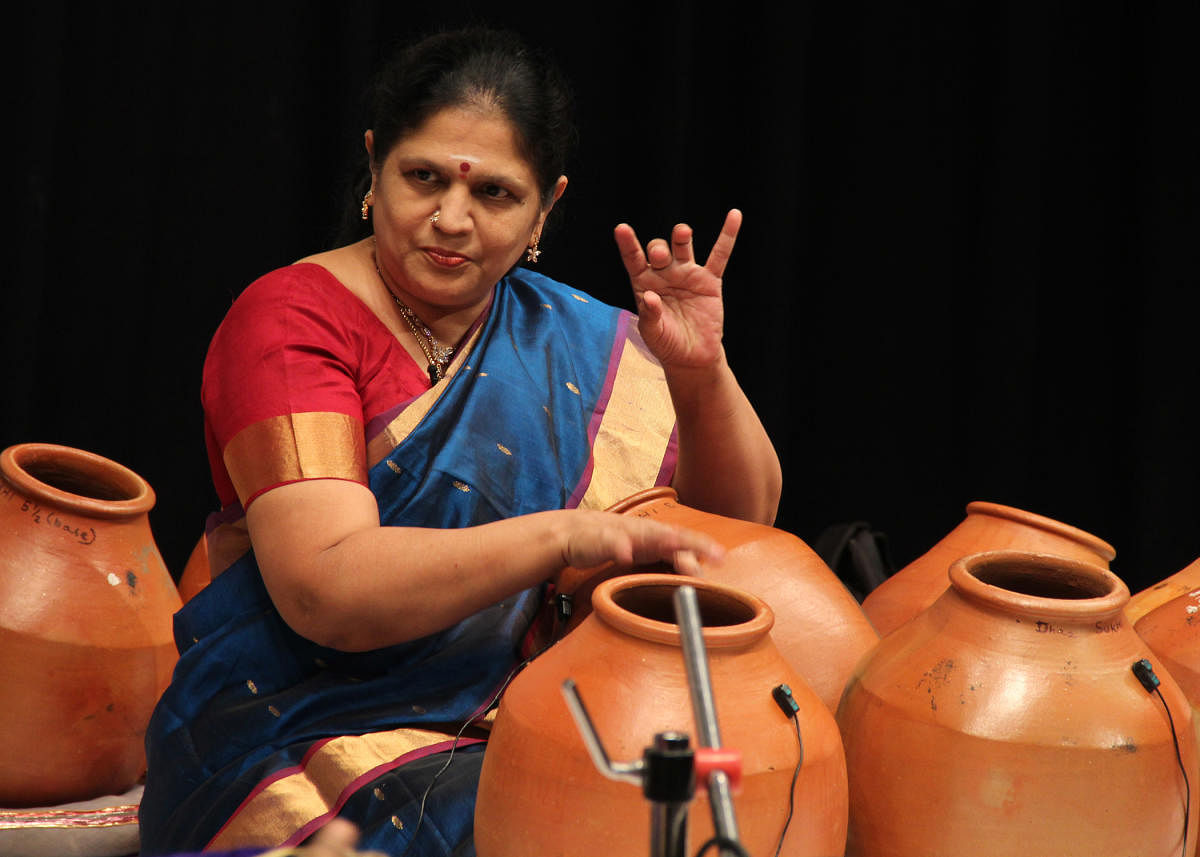

Is Karnatic music witnessing a revival of sorts with educated, tech-savvy, next-gen musicians arriving on the scene? But, pause for a moment: where did Karnatic music go for it to be revived? This traditional art form has always evolved to accommodate innovations, experimentations, and collaborations — several yesteryear Karnatic artistes have collaborated with jazz groups, Hindustani musicians and film musicians to create magic. They have invented ragas, created thillanas and composed music beyond imagined boundaries.
What is different now is that the digitalisation of music has made it easier for the younger Karnatic exponents, who have mostly grown up alongside the explosion of online platforms, to adapt easily to it. In turn, they have managed to attract an equally young viewership.
Many musicians have recording studios in their homes and upload their music snippets directly to listeners/viewers within minutes of creating them, giving them instant gratification and feedback. Some of them have even been able to monetise their online presence. Karnatic musicians are today no longer limited to a town, city or country — their reach is global. They have students attending their online music classes from across the world, just as they have rasikas listening to their music in all time zones.
Ever since online listening platforms like Spotify streamed the best sound-engineered recordings directly to listeners and encouraged them to create their own playlists, the music scene has never been the same again. Many famous musicians launch their new singles on Spotify. Then there are the video platforms like YouTube, Facebook, or Instagram which allow musicians to showcase their music and have their own band of faithful followers. With these sweeping changes in the global music industry, neither Karnatic music nor its traditional exponents could be left behind. As veteran musician Sukanya Ramgopal, the first woman ghatam percussionist, puts it, “Today everyone has a mobile in their hand. Times have changed and we must go along with it.”
Says morsing exponent Bharadwaj R Sathavalli, “Social media is very important without a doubt. It’s even a source of income for many big influencers. With easy access to content and content creators on social media, it’s here to stay and grow. So, it’s inevitable that you embrace it and build on it.”
Says vocalist Ramkumar Mohan, speaking for the Trichur Brothers duo, comprising Srikrishna Mohan and himself, “We grew up at a time when Facebook, Instagram and Twitter and other social platforms were big, and we were automatically hooked. It was important to be heard, you cannot be physically present everywhere and so social media became extremely important to build a brand.”
Adds young violinist Visvesh Chandrasekar, “In today’s digital age, it’s essential for artists to have a certain level of tech-savviness to connect with their listeners. One of the greatest advantages of social media and online platforms is the way they bridge the gap between artistes and their listeners, allowing the fans to make requests and engage with the musicians in a way that would not have been possible in the past.”
The Covid-19 lockdowns made it a necessity for many musicians to increase their online presence to continue to be able to earn their living. “Covid caused a lot of damage to artistes, for many of whom performing at a kutcheri was their livelihood,” says Sukanya. During the pandemic, the Chennai sabhas and Bengaluru mandalis also went online and live-streamed their December Season and the Ramanavami festivals to viewers.
Says Arun Subramanian, a business process consultant, and a serious follower of Karnatic music, “Musicians have been able to use digital platforms to reach out to a greater audience, with innovative offerings, collaborations and theme-based presentations. What’s more, artistes are generously sharing the nuances of music they have learnt or observed in performances of yesteryear stalwarts. I listen to many more artistes than I ever did and this is due to the fact that music went digital. Today, a complete concert is available as a live telecast and watching it from the comfort of one’s home is a great joy. One avoids the heavy traffic, parking hassles and other irritations like seating confusions and noisy neighbours.”
Hybrid avatars
If the rasikas are happy watching a live concert at home, does this mean the slow death of the live kutcheri? As Sukanya says, “The disadvantage of music going online, is that post-Covid when live kutcheris began, the audience numbers began reducing. People knew that it would come up on YouTube later and they could watch it then. But a musician’s happiness lies in getting applause from a live audience.”
However, even as the mandalis in Bengaluru and the sabhas in Chennai opened their doors for audiences to experience live concerts this music season, they did not give up their online presence and instead learned to co-exist with them. For instance, the Sree Ramaseva Mandali, which has been holding the annual month-long Sree Ramanavami Global Music Festival at the Fort High School, Bengaluru for the last 85 years also live-streamed the kutcheris held at the venue.
Says Abhijith Varadaraj, Executive Officer and joint Managing Trustee of Rama Seva Mandali, “The Ramanavami Celebrations in the past three years were either completely virtual or hybrid. While the audience did appreciate the fact that they could still enjoy the Ramanavami concerts in the comfort of their homes, despite the pandemic, they wanted to come back to the pandal to experience and submerge themselves in the divinity of music. We don’t feel that digitalisation and virtual concerts are a challenge to the conduct of our month-long festival. The digital platforms are increasing the fan base of classical performing arts, which is beneficial in driving more audience to such festivals.”
During this year’s Ramanavami festival season, the Sree Ramaseva Mandali responded to the growing popularity of young musicians by hosting many young performers during the prime-time slot of 6:30 pm. “How can artistes be known as “leading” without them being new at some point? Historically, the Ramanavami festival has seen such changes every 10-15 years. Towards our vision of preserving, protecting, and promoting classical performing arts, it’s important for us to stay connected with the next generation. Featuring young artistes also inspires other youngsters to learn, enjoy and appreciate classical music. We believe this experiment is indeed successful,” says Abhijith.
What is more, the digital popularity of these artistes has given them the opportunity to go on concert tours in the US and other countries abroad. For it’s only at a live concert that performers can feed off the energy of a live audience, appreciating and applauding their music, and thus give their best performances.
Mainstream careers
What is also interesting about the new-gen Carnatic musicians is that not only are they tech-savvy and can navigate the nuances of social media, but many of them are also from mainstream professions. Many of them are software engineers, chartered accountants, and marketing professionals. Being smart young millennials, they are not dependent on the vagaries of their musical careers to earn their livelihood.
For instance, both Srikrishna and Ramkumar of the Trichur Brothers duo are chartered accountants. “Srikrishna and I were working for MNCs and later in financial software firms until 2014. The decision to move into music was a completely organic one. We were travelling most of the time, and we did not have the time to go to the office. Being professionally qualified gave us the wings to pursue our dreams without the fear of failing.”
Bharadwaj is a BITS postgraduate and a software engineer. “I think music and engineering complement each other well. Interestingly, folks at work are in awe of me being a musician and musicians are in awe of me being an engineering leader. It gives me a high excelling at both.”
‘A river can’t be still’
Many of the young Carnatic musicians are also part of bands, which take their experimentation in fusion forward. Again, as mentioned earlier, experimentation is not new to Carnatic music. Even in the glorious yesteryears, musicians like Lalgudi Jayaraman and Balamuralikrishna experimented with the form with their own creations; Vikku Vinayakram and U Srinivas collaborated with jazz musicians for Shakti; and the legendary M S Subbalakshmi had a repertoire of bhakti songs from several Indian and international languages and acted and sang in films.
Says Sukanya, “There’s nothing wrong with experimentation, a river can’t be still, it must flow, otherwise the water will become stagnant. Even in the yesteryears, traditional musicians have done a lot of experimentation — if everyone just plays the same way, music can’t grow. One of my own innovations is the Ghata Tarang. When you create something new, other musicians will get inspired to do something of their own and the music gets a chance to grow.”
Says Bharadwaj, who has collaborated with jazz musicians, Jugalbandis and Indie fusion bands: “I don’t think there’s anything new we are creating that hasn’t been created before by veteran musicians. Maybe, we happen to have more avenues to showcase, and we are a lot less constrained than they were.”
The Trichur Brothers add, “Every musician has his own thought process, his own expertise and the more musicians you work with, the more you end up learning. Namami Gange (National Mission for Clean Ganga) and Vandhe Bharathambe (a tribute to the armed forces) are basically compositions that came from these spaces — we tremendously enjoy working with other musicians.”
Keeping the aesthetics intact
However, all the musicians agree that in the name of experimentation and collaboration, Carnatic musicians should not compromise on the tradition and aesthetics of the format. And music ought not to be shortchanged in the name of innovation.
Just as the digitalisation of music is here to stay and online platforms have changed the form and presentation of music — for the rasika, just as for the musician, the experience of being part of a live concert can never be replicated by any digital platform. To be able to meet other rasikas, exchange notes and try to guess the raga, before the artiste announces it, is a thrill in itself.
And, whether digital or live, if this ancient art form is getting younger with younger musicians and younger fans taking to it, ultimately, it is music that is the winner.
The author is a journalist, storyteller and a rasika of all genres of music who cannot do without her morning cup of filter coffee.